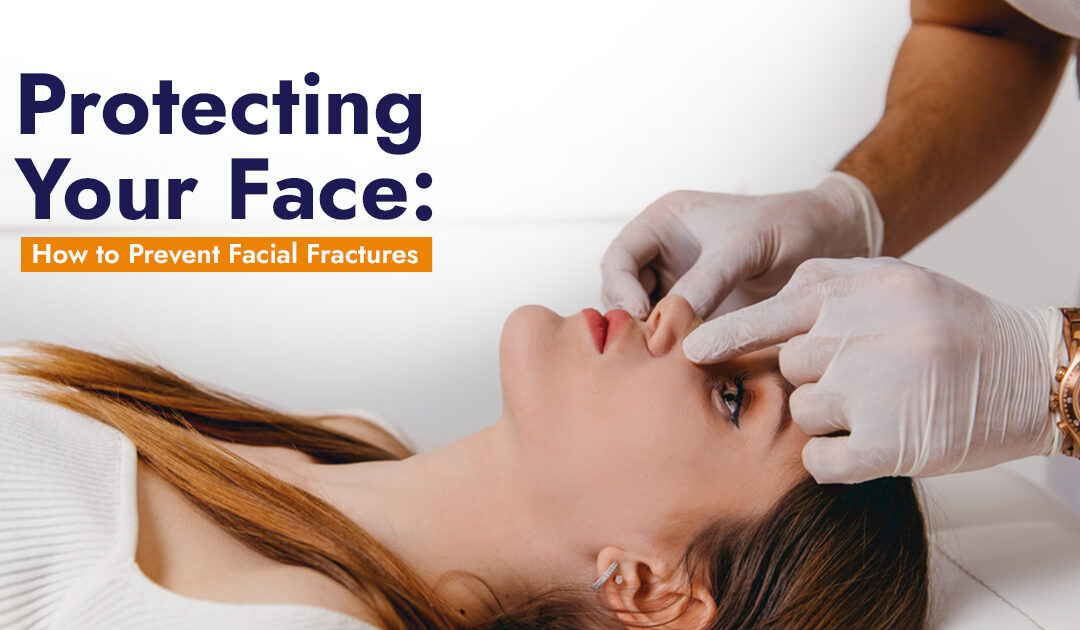A doorway to our soul, a canvas for emotions, and a natural wonder, the human face is a remarkable creation. The face is prone to injuries, especially fractures, due to its delicate anatomy. Numerous things, including sports injuries, falls, accidents, and even violence, can result in facial fractures. Treatment alternatives notwithstanding, the best course of action is always to avoid a facial fracture in the first place.
What are Facial Fractures?
A facial fracture happens when one or more of the face’s bones crack or shatter. These fractures can be serious (including numerous bones with displacement) or mild (like a hairline fracture in the nose). The following symptoms may occur, depending on the location and extent of the fracture:
- Pain, bruising, and swelling in the vicinity of the injury
- Trouble speaking or chewing
- Tingling or numbness
- Bleeding coming from the lips or nose
- Apparent facial malformation
- Uneven or loose teeth
Some Prevention Strategies Include:
Prevention is facilitated by understanding the causes. To reduce your chance of suffering a face fracture, follow these tips:
- Use caution when engaging in activities: If you work in a dangerous setting or engage in high-risk hobbies like sports, make sure you take the appropriate safety measures.
- Put on Safety Equipment: Wear safety equipment such as mouth guards, safety glasses, or helmets with face shields according to the activity you’re doing.
- Fall Prevention: Put grab bars in place, clear out any tripping hazards, and make sure your home is well-lit to improve safety for senior citizens and anyone who are prone to falls.
- Safety Tip: When riding in a car, always buckle up your seatbelt. Should there be an accident, it can greatly lower the chance of facial damage.
- Reduce Tension: Do this by steering clear of potentially dangerous situations and, whenever you can, using dispute resolution techniques.
- Boost Bone Strength: In general, the risk of fractures can be decreased by maintaining good bone health through weight-bearing exercise and a diet high in calcium.
Common Types of Reconstructive Surgeries
The scope of reconstructive surgery is vast, covering a wide array of procedures, including but not limited to:
- Breast Reconstruction and Reduction: Essential for women post-mastectomy and for those with large breasts causing health issues. Men may also undergo breast reduction for gynecomastia.
- Limb Salvage: Techniques that save limbs from amputation using tissue transplants.
- Facial Reconstructive Surgeries: For correcting defects like cleft lip, snoring, chronic infections, or following tumor resections.
- Hand Procedures: Addressing issues like webbed fingers, carpal tunnel syndrome, arthritis, or trauma.
- Skin and Wound Care: Including skin grafts for burns and severe cuts.
- Microsurgery or Flap Procedures: To replace body parts affected by injury or disease.
- Other Specialized Procedures: Such as craniosynostosis surgery (head reshaping), gender confirmation surgeries, lymphedema treatment, migraine surgery, panniculectomy (body contouring), and septoplasty (deviated septum correction).
The Impact of Reconstructive Surgery
The benefits of reconstructive surgery extend beyond physical corrections. It profoundly impacts the emotional and psychological well-being of patients. By restoring functionality and offering a more typical appearance, it boosts self-esteem, alleviates discomfort, and enhances the overall quality of life.
Reconstructive surgery is a crucial medical field that offers much more than aesthetic enhancement. It provides a pathway to normalcy for those affected by various physical deformities, be it from birth, disease, or injury. It’s a journey beyond the scars, paving the way towards a life of improved function, appearance, and self-assurance.

